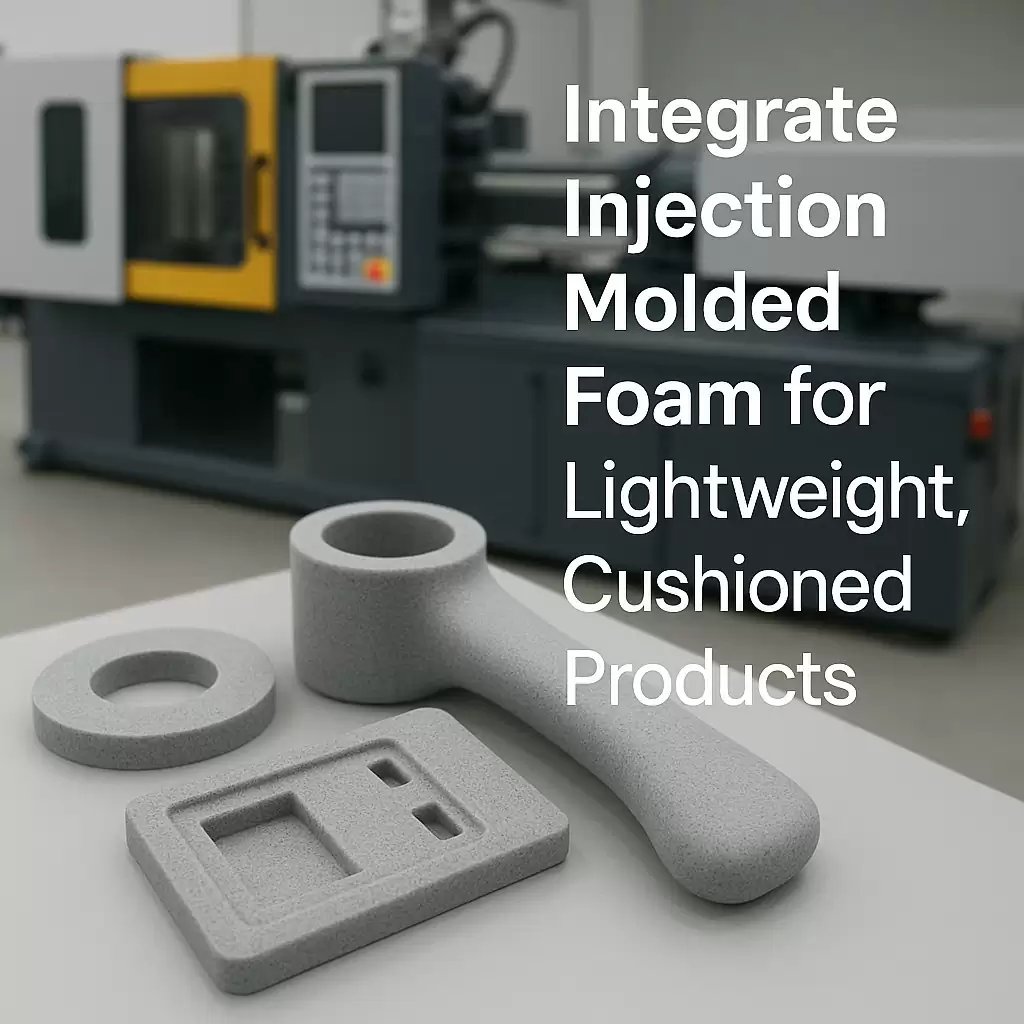Integrate Injection-Molded Foam for Lightweight, Cushioned Products
Integrate Injection-Molded Foam for Lightweight, Cushioned Products
Foam injection molding—sometimes called structural-foam molding or micro-cellular (MuCell®) molding—combines a gas-charged polymer melt with conventional injection molding to create a self-skinned, foamed core. The result is a part that weighs 10–35 % less than a solid counterpart while adding built-in cushioning, vibration damping, and excellent stiffness-to-weight ratios. Below is a practical guide to designing, tooling, and scaling foam-molded parts with help from TaiwanMoldMaker.com.
1 Why Choose Injection-Molded Foam?
| Advantage | Design Payoff |
|---|---|
| Weight Reduction (10–35 %) | Lower shipping cost, easier handheld use, energy savings in vehicles |
| Integral Skin | Hard, cosmetic exterior surface with a cellular core—no secondary over-mold needed |
| Warpage Resistance | Internal gas pressure balances shrink, holding tight flatness on large panels |
| Thick-Wall Freedom | Walls up to 15 mm without sink marks—perfect for handles and grab rails |
| Vibration & Impact Damping | Microscopic cells absorb energy, protecting electronics and users |
| Shorter Cycle Times | Lower melt density fills faster; controlled pressure reduces clamp tonnage |
2 Process Basics
-
Polymer/Gas Blending
– Either physical foaming (SCF CO₂ / N₂) or chemical blowing agents mix with molten resin. -
Low-Pressure Filling
– The shot enters the cavity 35–70 % under normal injection pressure, allowing gas to expand. -
Self-Skin Formation
– Outer layers freeze against the mold wall, forming a solid skin; the core continues to foam. -
Packing & Cooling
– Internal cell pressure replaces conventional pack/hold, cutting clamp tonnage by up to 50 %.
3 Material & Additive Options
| Resin Family | Typical Density Drop | Best-Fit Applications |
|---|---|---|
| PP / High-Impact PP | 10–15 % | Appliance housings, auto trim |
| PC / PC-ABS | 15–20 % | Helmet shells, rugged electronics |
| PA 6/66 + GF | 20–25 % | Power-tool frames, drone airframes |
| HIPS / ABS | 15–25 % | Furniture components, luggage shells |
| TPU / TPE | 30 %+ | Soft grips, medical cushioning pads |
Tip: Add talc or glass fibers when stiffness must rise faster than weight falls.
4 Design Guidelines
-
Wall Thickness 2–15 mm — thicker walls yield more weight savings with no sink.
-
Draft Angle ≥ 1.5° — foam parts shrink less but still need smooth ejection.
-
Ribs & Bosses 0.7–0.9 × wall — foamed core reduces sink, allowing generous features.
-
Flow Leaders Add flow channels on large panels to guide uniform cell growth.
-
Texturing Medium VDI textures mask swirl and “tiger stripes” common to foam surfaces.
5 Typical Part Families
| Sector | Injection-Foam Parts |
|---|---|
| Automotive | EV battery covers, seat backs, spoiler cores |
| Medical & Life-Science | Lightweight walker frames, diagnostic equipment shells |
| Consumer Products | Bicycle helmets, protective phone cases, stroller components |
| Industrial & IoT | Vibration-damped sensor mounts, drone fuselages |
| Furniture & Appliances | Chair shells, refrigerator door liners |
6 Validation Checklist
-
Cell-Structure SEM Analysis — confirms uniform density drop.
-
Impact / Drop Testing — proves energy absorption vs. solid equivalents.
-
UL 94 / FMVSS Flame Tests — critical for transport and appliance parts.
-
ISO 179 Charpy — documents toughness improvement over talc-filled solids.
7 How TaiwanMoldMaker.com Makes Foam Molding Simple
| Challenge | Our Built-In Solution |
|---|---|
| SCF dosing accuracy | MuCell®-licensed screws & shut-off nozzles on 60–850 t presses |
| Cosmetic “swirl” | Moldflow® gas-front simulations + balanced runner layouts |
| Clamp-force oversizing | Low-pressure fill reduces tonnage; smaller presses lower part cost |
| Multi-Material shells | Two-shot tooling merges solid aesthetic faces with foamed structural backs |
| ESG targets | Density reduction = ≤ 0.45 kg CO₂ saved per kg of resin vs. solid parts |
One-Click Service Links
8 Next Steps—Lighten the Load
-
Upload your CAD & target weight-reduction goal.
-
Receive a 48-Hour Foam DFM Pack—gas dosage, gate plan, and cost model.
-
Approve the bridge-tool quote (Al 7075 or P20).
-
See foam first articles in as little as three weeks with density and impact-test data attached.
Lighter, tougher, quieter—foamed parts check all three boxes. Partner with TaiwanMoldMaker.com to integrate injection-molded foam into your next product and outpace the competition on weight, performance, and cost.









